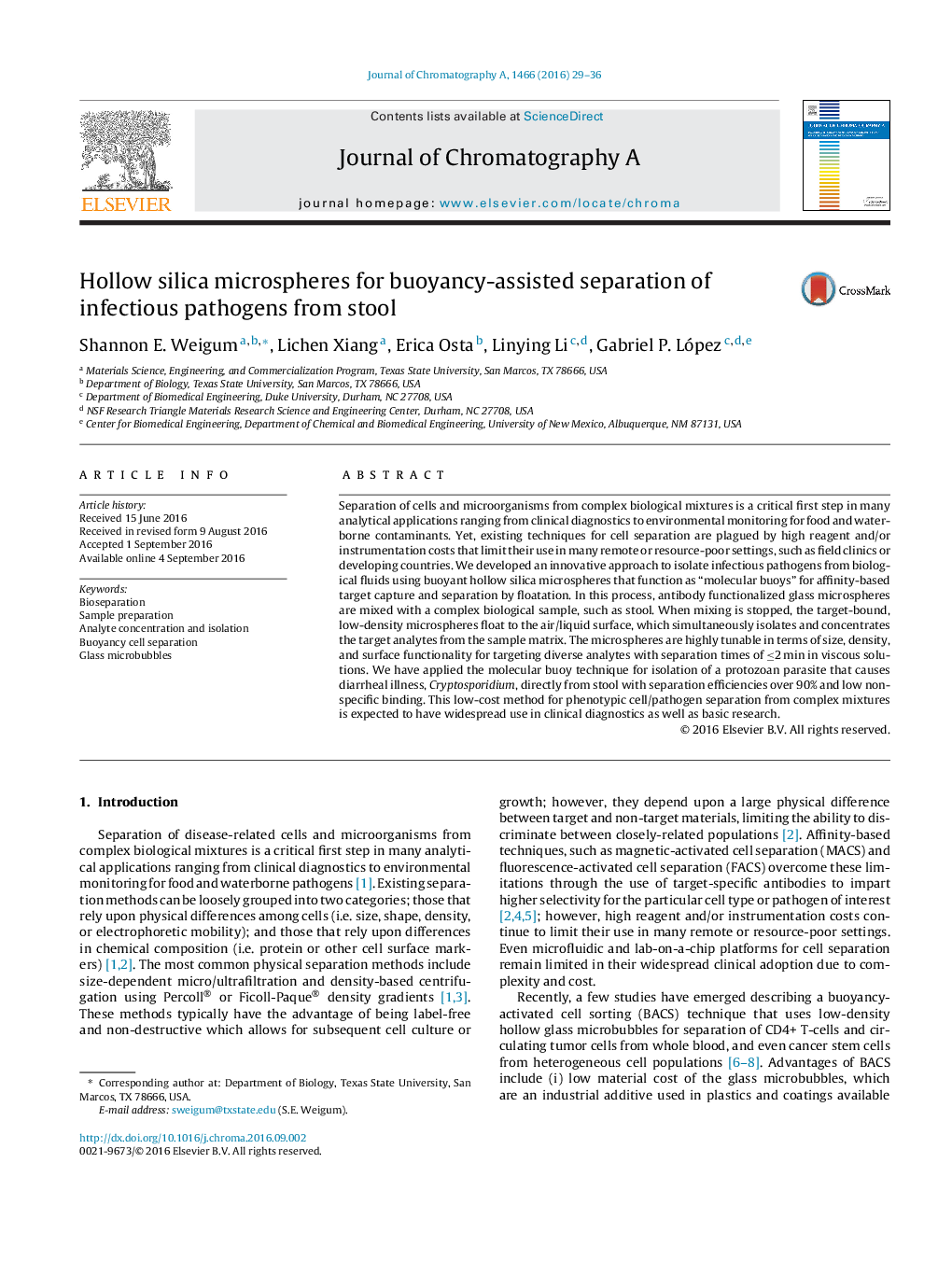| کد مقاله | کد نشریه | سال انتشار | مقاله انگلیسی | نسخه تمام متن |
|---|---|---|---|---|
| 5135969 | 1493460 | 2016 | 8 صفحه PDF | دانلود رایگان |
عنوان انگلیسی مقاله ISI
Hollow silica microspheres for buoyancy-assisted separation of infectious pathogens from stool
ترجمه فارسی عنوان
میکروسپرسهای سیلیکا توخالی برای جدا شدن پوسیدگی های عفونی از مدفوع
دانلود مقاله + سفارش ترجمه
دانلود مقاله ISI انگلیسی
رایگان برای ایرانیان
موضوعات مرتبط
مهندسی و علوم پایه
شیمی
شیمی آنالیزی یا شیمی تجزیه
چکیده انگلیسی
Separation of cells and microorganisms from complex biological mixtures is a critical first step in many analytical applications ranging from clinical diagnostics to environmental monitoring for food and waterborne contaminants. Yet, existing techniques for cell separation are plagued by high reagent and/or instrumentation costs that limit their use in many remote or resource-poor settings, such as field clinics or developing countries. We developed an innovative approach to isolate infectious pathogens from biological fluids using buoyant hollow silica microspheres that function as “molecular buoys” for affinity-based target capture and separation by floatation. In this process, antibody functionalized glass microspheres are mixed with a complex biological sample, such as stool. When mixing is stopped, the target-bound, low-density microspheres float to the air/liquid surface, which simultaneously isolates and concentrates the target analytes from the sample matrix. The microspheres are highly tunable in terms of size, density, and surface functionality for targeting diverse analytes with separation times of â¤2 min in viscous solutions. We have applied the molecular buoy technique for isolation of a protozoan parasite that causes diarrheal illness, Cryptosporidium, directly from stool with separation efficiencies over 90% and low non-specific binding. This low-cost method for phenotypic cell/pathogen separation from complex mixtures is expected to have widespread use in clinical diagnostics as well as basic research.
ناشر
Database: Elsevier - ScienceDirect (ساینس دایرکت)
Journal: Journal of Chromatography A - Volume 1466, 30 September 2016, Pages 29-36
Journal: Journal of Chromatography A - Volume 1466, 30 September 2016, Pages 29-36
نویسندگان
Shannon E. Weigum, Lichen Xiang, Erica Osta, Linying Li, Gabriel P. López,
